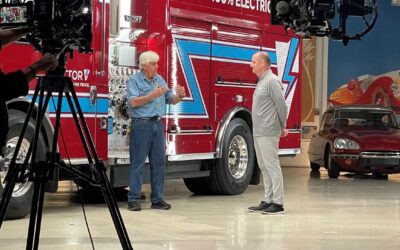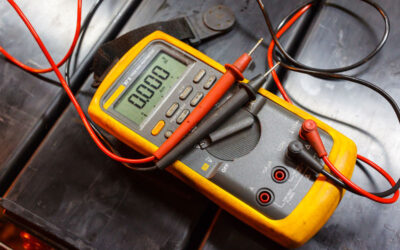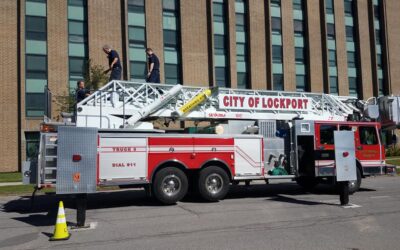By Bill Adams
This article is not an accusation that the writers of the National Fire Protection Association’s NFPA 1901 Standard for Automotive Fire Apparatus purposely promulgate requirements that are conflicting, divergent, or confusing. They just appear to be. Perhaps some people with passionate feelings about “the way things ought to be” are reading between the lines. Others may interpret an NFPA 1901 requirement to justify their personal opinions. Yet some are not well-versed in the subject. I can fall into all three categories.
Personal Opinion
My opinion is slow-flashing warning lights have merit in both the blocking the right-of-way mode (stopped) and the asking for the right-of-way mode (responding). It is conceivable to me that fast-flashing lights could mean an emergency vehicle is responding and it wants the right-of-way, and slow-flashing lights means the vehicle has stopped and is already blocking the right-of-way.
Disclaimer: This opinion is not disparaging the use of “moving” warning lights in light bars, or separate rotating or oscillating lights, roto-rays, or, my favorite, the Mars figure 8 light. Nor does it pass judgment whether an incandescent or halogen or light emitting diode (LED) light is better.
In the responding mode, slow flash rates as well as the steady-burning warning lights popular in California might have intrinsic value. Both slow-flashing and steady-burning lights might enable a motorist to discern if the emergency vehicle is moving–and in what direction–and possibly how fast it is moving. They could conceivably reduce accidents.
Some extraordinarily bright, blinding, fast-flashing, throbbing, gyrating, spinning, and wobbling warning lights can be discomforting and even distracting. Granted, they’re saying “look out,” but they may not give any indication of the direction or speed in which a responding apparatus is moving.
NFPA 1901 Interpretation
NFPA 1901 standard appears to be somewhat confusing: Under Section 13.8.11 Flash Rate, sentence 13.8.11.1 says, “The minimum flash rate of any optical source shall be 75 flashes per minute, and the minimum number of flashes at any measurement point shall be 150 flashes per minute.” Immediately following, sentence 3.8.11.1.1 says, “Steadily burning, non-flashing optical sources shall be permitted to be used.” If NFPA 1901 says a non-flashing light can be used, why does it put a minimum and maximum flash rate if the light does flash? Why are there upper and lower flash rate speeds? What benefit is there in having variable speeds?
It is unknown if motorists are acclimated, or will react naturally, to various flash rate speeds or even to a non-flashing warning light. Are different flash rate speeds intended to send different “signals” (no pun intended) to motorists? Perhaps the warning light manufacturers and their advocates have investigated and conducted tests to determine what they are.
Some warning light vendors can be tight-lipped about the future NFPA 1900 standard which will incorporate the 1901 document. One can get the impression they do not appreciate being asked questions they do not want to—or can’t—answer. If you don’t like the question, should it be ignored? The public has access to the proposed changes and modifications to the NFPA’s warning light requirements—which I admittedly have not personally investigated.
The Steady Light?
Paraphrasing one light manufacturer: A steady burning light is a very effective signal for warning but much more difficult to measure. He said optical power is based on flash energy times the number of flashes. If a light does not flash, optical power measurements cannot be used. Manufacturers would be forced to revert back to beam patterns and candlepower to define the light, which is subjective and a terrible unit of measure for warning lights. Manufacturers have been trying to do away with that type of testing for the last 30 years.
NFPA 1901 is a minimum performance standard allowing end users to apply the warning signals desired—as long as the minimum requirements are met. It appears to be very flexible in that it apparently does not prohibit the end user from using supplemental warning lights in addition to the minimum required. It is unknown if supplemental warning lights have to be compliant with the NFPA 1901 standard.
The Future
A fact of life is many in the fire service like high-activity and intense warning lights—the more the better. To be profitable, manufacturers sell warning lights that customers prefer and not necessarily what is best for them. When asked if steady burning warning lights would be “appropriate” for a fire truck, one manufacturer responded, “Of course it is ‘appropriate.’ However, it just may not be technically, factually, or scientifically accurate. Those three items are important when talking about what is best for the fire service.”

Sometimes old is not necessarily outdated. This 1963 Mack has two slow-flashing red lights located well above the headlights and separate from the directional lights. Is it beneficial to specify a degree of separation between directionals, lower-level warning lights, and headlights? Ask your local apparatus vendor. Then ask him if a round-, square-, or rectangular-shaped flashing light is better.






